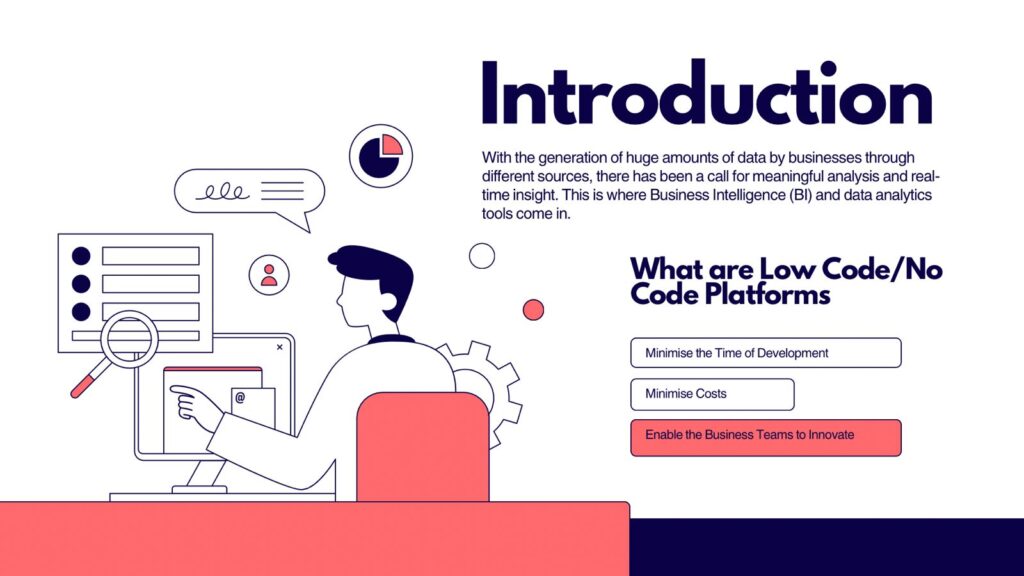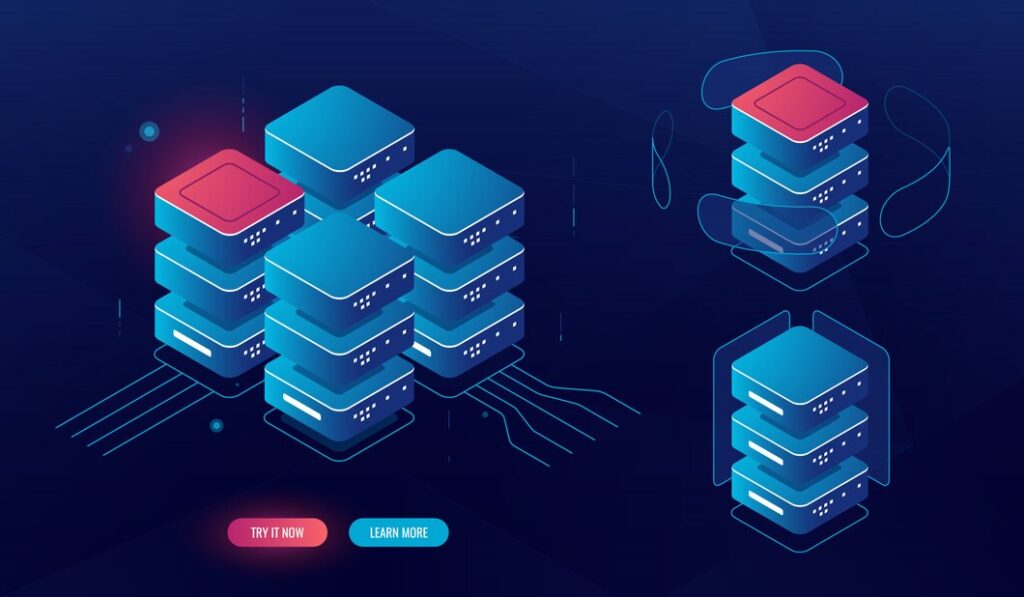Static and Dynamic Websites

Static and Dynamic Websites: What is the Best Suited to Your Business? Share Share Share Static and Dynamic Websites: What is the Best Suited to Your Business? Introduction: The First Step in Web Development Customers will most likely be interacting with your brand through your site. As a startup, enterprise or even SME, your success on the web can be heavily influenced by the right choice you make at the early stages of Web Development. One of the most important choices you will need to make is the type of site you are going to develop, a Static or Dynamic site. Both are good and the choice will depend on your business, technical requirement, content action plan and budget. To allow you to make the right choice, in this guide, we will deconstruct the key differences, as well as advantages and use cases of each type of the website’s development. Click Here to learn how Infogenx can assist you with Web Development? What is a Static Website? A Static Website is one which is composed of fixed information coded in HTML, CSS and occasionally JavaScript. All the visitors on the site will be shown the same content unless the developer manually updates the files. Important Static Web Sites Characteristics: Storing and Delivery of pages is in an as-is manner No back-end programming or database connectivity Further speed in loading and improved security Reduced development and hosting expenses Best For: Brochure websites Portfolios Landing pages of small business Microsites dedicated to an event or campaign What is a Dynamic Web Site? A Dynamic Website gets information on-demand and is updated depending on how users interact with it, their preferences, or server-side input. They are server-side languages such as PHP, Python or Node.js and are usually integrated with a content management system (CMS) or a database. Dynamic Web Sites Characteristics: On-the-fly content generation is provided Individualised user experiences Linked to databases and backends It is simple to scale and update with no technical skills Best For: E-commerce stores News and on blogs SaaS dashboards Frequently updated content enterprise websites 📊 Static and Dynamic Web Sites: A Head-to-Head Comparison Feature Static Website Dynamic Website Development Complexity Simple Complex Performance Quicker Real time slower Content Updates Manual (Developer is required) Simple through CMS Security Very Safe (less chances of attack) Requires tighter measures of security Cost Lower More (because of backend systems) Scalability Limited Very Scalable (Cloud or API enabled) Interactivity Minimal High (perfect in the contemporary UX/UI) When Should You Select a Static Site? You require a simple, informative web presence Your content does not change very often Performance and speed are the key priorities You do not have a lot of money to spend You have no user login, real time updates, and databases When choosing the Dynamic Web Site Appropriate? You are going to operate an e-business store What you have is dynamic (blog, news, products) You require log-in, user profiles or forms The issue of personalization and automation is important You desire to grow and merge with others systems The SEO Point of View: Static or dynamic ✅ Static Websites: Quick loading speed = improved Google performance Less redirects or broken links More easily cached and indexed ✅ Dynamic Websites: It is more convenient to include structured metadata Easier to update and blogging strategies Dynamic sitemaps, categories and filters are supported 💡 Pro Tip: In case of a dynamic web site, make pages SEO friendly and load quickly. Make use of caching, CDN and efficient queries. Hybrid Method: A Combination of the Best? The current generation of websites employs a hybrid solution that combines both the static and dynamic features with the technologies such as: Jamstack (JavaScript, APIs, Markup) Static site generators and Headless CMS Next.js or Nuxt.js for hybrid rendering It provides the speed and scalability of a static site and the interactivity of a dynamic one in one package, ideal to companies looking to have all three. The Role of Infogenx in Helping You to Take the Correct Path We know at Infogenx that there is no one size fits all approach to web development. In our Web Development Services we include: Strategic Consultation: Static, dynamic or hybrid? Custom websites design & development Dynamic E-commerce solutions WordPress, Webflow, Drupal websites, which are based on CMS. CRMs, APIs and business platform integration SEO-friendly architecture that is optimized on mobile devices Continuous support and hosting services We have provided the top retailing, logistics, healthcare and professional services to clients with the powerful web experiences that not only fit your business, but also expand with it. Check Infogenx Web Development Service to transform ideas into powerful, scalable applications that fuel business growth! ✴️ Confused about what type of website to choose? A free consultation on web development can help you make the right choice with the help of our experts. 👉 Book Your Free Consultation Popular Web Development Tools to be used on Static & Dynamic Sites Purpose Static Website Dynamic Website Languages CSS, JavaScript, and HTML PHP, Python, Node.js and ASP.NET Frameworks Hugo, Jekyll & Eleventy Laravel, Django, express.js CMS Forestry, Netlify CMS WordPress, Drupal, Shopify Hosting GitHub Pages, Vercel, Netlify AWS, DigitalOcean, Azure Database Not required MySQL, MongoDB, postgresql 🧑💻 Real-life Application Client: An Indian based logistics company (SME level) The Issue: Static site with no backend was difficult to update, did not have contact forms and tracking of the live shipment. Infogenx Solution: Transferred to an interactive site that has CMS to update contents easily Added the customer login and real time tracking feature Created custom dashboards in React + Node.js APIs which are connected to their own inventory system Results: ✅ 3x increase in user engagement ✅ 60 percent reduction of support tickets ✅ Enhanced search ranking (SEO) of 45 percent Click Here to learn how Infogenx unlocks the full potential of web development by mastering the server-side logic that powers modern applications. Statically Vs Dynamically Web Site FAQs Q1. Is it possible to change it
How AI is Reshaping Retail: Predictive Analytics in Action

A Power of Low Code: How Business Apps will Change in 2025 ShareShareShareThe views expressed in this post are the writer’s and do not necessarily reflect the views of Aloa or AloaLabs, LLC. Why Low-Code Development Is Surging in 2025 The nature of business application development is changing seismically in 2025. The long-established code-heavy development methods that were the usual way of doing things are being overtaken by low-code platforms, which can deliver apps in record time with minimal manual code. This is not a fad; it is a response to real business needs: time to market, cost efficiency and democratisation of innovation. Low-code platforms enable enterprises to create strong and scalable apps using a visual interface, drag and drop interface and pre-built components. Be it a startup or a fortune 500 business, low-code platforms are being integrated to help businesses in their digital transformation initiatives, cut down on their operations, and respond to the changes in the market. What is Low-Code Development? A 2025 Guide Low-code development is the use of platforms where little coding is done by hand to develop applications. Developers design and model applications using graphical user interfaces and configuration tools as opposed to writing thousands of lines of code. Core Features of Low-Code Platforms in 2025: ● Drag-and-Drop Design Tools: Drag and drop design interface is one of the basic advantages of low-code platforms as it allows users to design application interfaces visually without writing complicated code. Instead of coding each button, each form or layout element on a page separately, the user needs only to drag the items out of a toolbox and drop them on a canvas. It minimises the possibility of UI errors and ensures design consistency between applications. ● Pre-built templates & Components: Low-code solutions are already supplied with a set of pre-built templates and reusable objects, i.e., login pages, dashboards, approval processes, data tables, etc. These ready-made components enable users to build applications in a short time without building them entirely. Templates can be used to give a strong basis for the commonly used cases whereas the components are used to make the design and structure consistent. Not only does this speed up the development process but it also minimises errors and stipulates best practices and therefore facilitates an increase in the rate of app-building as well as makes it more convenient to both technical and non-technical users. ● Visual Workflows for Logic and Automation: Low-code gives the user the ability to specify business logic and automation using visual workflow editors. As opposed to the complicated backend coding, the users are able to map out processes with the use of flowcharts, decision trees, and triggers all in a user-intuitive interface. ● Cloud-Native Deployment: Low-code platforms are usually constructed on cloud-native, which enables applications to be launched in the cloud with little configuration. It gives automatic updates, real-time backups, global availability, and connects to other cloud services. ● Cross-Platform (Mobile, Web, Desktop): With the help of this feature, applications are automatically responsive to the various screen sizes and operating systems with built-in responsiveness and adaptive design tools. This cross-platform feature can do away with the process of creating an entirely different version of the same product on each gadget and it saves both time and resources. Your users could be on Android, iOS, a browser, or a desktop application, and low-code would allow a smooth experience and unification of code base across all platforms. Top Reasons Low-Code Is Dominating in 2025 The world is facing a shortage of good developers. Low-code will help to address this talent shortfall by allowing non-technical users (citizen developers) to create apps without having to lean exclusively on IT departments. Markets are dynamic and businesses require dynamic tools. Low-code platforms enable businesses to go through rapid prototyping and deploy apps within weeks, not months. Companies can save a lot of money in terms of development costs, hiring, training and infrastructure with low-code. A lot of platforms are cloud-native which minimises on-premise investments. Low-code allows business users (e.g. operations, HR, marketing) to build the tools that they need themselves–breaking the bottlenecks and becoming less IT dependent. The most popular enterprise systems (e.g. SAP, Salesforce, Oracle) can be perfectly integrated with low-code platforms of today using APIs and connectors. Use Cases of Low-Code The use of low-code is observed in every industry and business activity. These are such strong examples: 1. Employee and HR Portals To build apps used in onboarding, leave management, and performance tracking, HR teams develop them without having to write a single line of code. 2. Supply Chain and Logistics The low-code apps can track shipments, manage inventory, and automate vendor communications– which are critical to real-time decision making in the supply chains. 3. Finance and Compliance The low-code is adopted to automate the processes of invoice approval, report creation, and regulatory compliance of the finance department. 4. Healthcare Solutions The patient tracking systems, appointment scheduling tools, and remote diagnostics mobile apps can be built with the help of low-code by hospitals. Low-Code vs Traditional App Development: Which Is Better in 2025? Feature Low-Code Development Traditional Development Speed Weeks Months Cost Low High Flexibility Moderate to High Very High Skill Requirement Low to Medium High Maintenance Easier, Platform Supported Developer-Intensive Scalability Improved in 2025 Custom Built Although traditional development is still useful with the most complex and performance-sensitive applications, most internal tools and business process applications today are developed using low-code. Digital Transformation Powered by Low-Code and Intelligent Automation It is expected that low-code development will be strongly related to such intelligent automation technologies as AI, RPA (Robotic Process Automation), and ML (Machine Learning) in 2025. The Way They Are Collaborating: This synergy speeds up hyper automation, which is the concept of automation of all areas in the business that can be automated. Challenges of Low-Code Platforms & How to Overcome Them Regardless of the momentum, low-code adoption is accompanied by challenges that businesses would have to deal with: 1. Governance Risks of security, data integrity and compliance may be posed by uncontrolled citizen development. It is crucial to
Integrating Low-Code and No-Code Platforms with Data Analytics and Business Intelligence (BI) Tools

Integrating Low-Code and No-Code Platforms with Data Analytics and Business Intelligence (BI) Tools ShareShareShareThe views expressed in this post are the writer’s and do not necessarily reflect the views of Aloa or AloaLabs, LLC. Introduction: The Future of Data-Driven Development In the modern fast-paced digital economy, data is the most significant resource that an organisation can utilise. With the generation of huge amounts of data by businesses through different sources, there has been a call for meaningful analysis and real-time insight. This is where Business Intelligence (BI) and data analytics tools come in. Meanwhile, low-code and no-code solutions are transforming the app development paradigm because developers and non-developers can quickly build business applications using minimal coding or no code at all. What are No-Code/ Low-Code Platforms? Low-code platforms may be visual whereby the user may build apps via drag-and-drop components, ready-made templates as well as with limited hand-coding. More so, no-code platforms enable users without any technical expertise to build their apps without code to a greater degree. It is these platforms that are becoming very popular in the various industries as they can minimise the time of development, minimise costs and enable the business teams to innovate without necessarily having to involve the IT departments. Why Data Analytics and BI Are Essential in Present-Day Businesses? Power BI, Tableau, Looker, and Qlik are all Business Intelligence (BI) solutions that help companies to analyse previous and current data to make strategic decisions. Data analytics deals with the collection, transformation and modelling of data to discover useful information and make decisions. Click here to know why low-code development is surging in 2025 and how it can make a change! What are the Benefits of Integrating Low-Code/No-Code and Data Analytics and BI? ● More Expedient Decision Making: Integrate real-time dashboards into apps to come up with faster perceptions. ● End-to-End Workflows: Automate data collection, processing as well as visualisation on one platform. ● Cost-Efficiency: Cut the cost and fees of licensing and development through the consolidation of two functions. ● Customised Intelligence: Customise dashboards and analytics experiences by roles or department. Click here to see how small businesses are winning big with Low Code development and how many benefits itms integration has! Major Integration Functionalities and Abilities: Built-In BI Connectors A wide variety of low-code platforms are now available with out-of-the-box integration to common BI tools. As an illustration, Microsoft Power Apps can be perfectly integrated with Power BI and serve to visualise data in the app interface. These connectors favour real-time data refreshment, embedded reports as well as interactive charts. Drag-&-Drop-Components of Analytics New platforms have ready-made analytic elements such as charts, gauges, and data grids. These elements can be dragged onto the user interface (UI) of an application and then configured to access either APIs or databases as a data source and customised to present varying views based on role. Automatic ETL (Extract, Transform, Load) Pipelines There are no-code automation software (Zapier or Make or Power Automate) that allow users to automate BI data collection, data cleaning, and BI data loading. It reduces the time spent on manual data preparation and also guarantees that the dashboards to always be up to date. Data Insights Made by AI Other low-code platforms are connected to machine learning models or AI services to provide predictive insight. Users will be able to create apps that not only report the past performance but also predict the trends, identify anomalies, and suggest further actions. Custom Data Connectors With more complicated use cases, users can build custom integrations or APIs to bring data into the apps and BI tools using ERPs, and CRMs. This avoids the existence of data silos. Use Cases: Where Integration Has Real Business Value Dashboards of Sales and Marketing Bring CRM information into a no-code dashboard to get real-time information on leads, conversion, and sales pipeline. Embedded BI reports can help sales reps or marketing managers make the best out of campaigns. Portals of HR Analytics Create a low-code app, which is a visual of employee engagement, turnover rates, and training effectiveness based on the data retrieved through HRMS platforms and displayed in Power BI or Tableau widgets. Finance and Budgeting Tools Develop a financial program that includes a budget dashboard, expense report, as well as revenue forecast with real-time data in accounting software applications such as QuickBooks or SAP. Healthcare Intelligence Platforms Build a patient management portal to visualise the essential health metrics and patient outcomes of EMRs (Electronic Medical Records) with embedded analytics on a no-code platform. Click here to discover how our cutting-edge Healthcare Technology Solutions are transforming patient care and operational efficiency! Supply Chain Optimization and Logistics Optimization Create dashboards of the logistics, displaying stocks and supplier performance and delivery schedules, combining information in ERPs, GPS tracking systems, and warehouse software. Guidelines for Integration Clear Objectives Before integrating the BI into low-code/no-code apps, you must explain to your users what insights will be the most valuable to them. Data Quality and Governance The poor quality of data gives misleading information. Activate data validation, access by roles and audit trails to make it correct, in compliance and secure. Use Modular Architecture Your app and analytics layers should be loosely connected to the APIs or services. It enhances flexibility and eases maintenance. User Experience Design Make dashboards and analytics views responsive, interactive and mobile. Enhance usability by using visual identifiers such as colour coding, Tooltips and Drill-down. Make Use of Real-Time Data Real-time analytics is essential in such applications as operations monitoring or customer service. Access mobile apps that allow real-time alerts through streaming data and push notifications. Issues of BI-Low-Code/No-Code Integration Integration Barriers and Data Silos Legacy systems might not expose APIs readily, necessitating middleware or data migration initiatives to integrate data sources. Scalability Issues A large data load or complicated visualisation may influence application performance, and this is more common in no-code. Citizen Developers Learning Curve Although no-code tools are simple to operate, setting up BI reports or getting to grips with data modelling might need some upskilling. Security and Compliance Issues Data that is sensitive needs to be integrated properly into apps and analytics tools so that it
A Power of Low Code: How Business Apps will Change in 2025

A Power of Low Code: How Business Apps will Change in 2025 ShareShareShareThe views expressed in this post are the writer’s and do not necessarily reflect the views of Aloa or AloaLabs, LLC. Why Low-Code Development Is Surging in 2025 The nature of business application development is changing seismically in 2025. The long-established code-heavy development methods that were the usual way of doing things are being overtaken by low-code platforms, which can deliver apps in record time with minimal manual code. This is not a fad; it is a response to real business needs: time to market, cost efficiency and democratisation of innovation. Low-code platforms enable enterprises to create strong and scalable apps using a visual interface, drag and drop interface and pre-built components. Be it a startup or a fortune 500 business, low-code platforms are being integrated to help businesses in their digital transformation initiatives, cut down on their operations, and respond to the changes in the market. What is Low-Code Development? A 2025 Guide Low-code development is the use of platforms where little coding is done by hand to develop applications. Developers design and model applications using graphical user interfaces and configuration tools as opposed to writing thousands of lines of code. Core Features of Low-Code Platforms in 2025: ● Drag-and-Drop Design Tools: Drag and drop design interface is one of the basic advantages of low-code platforms as it allows users to design application interfaces visually without writing complicated code. Instead of coding each button, each form or layout element on a page separately, the user needs only to drag the items out of a toolbox and drop them on a canvas. It minimises the possibility of UI errors and ensures design consistency between applications. ● Pre-built templates & Components: Low-code solutions are already supplied with a set of pre-built templates and reusable objects, i.e., login pages, dashboards, approval processes, data tables, etc. These ready-made components enable users to build applications in a short time without building them entirely. Templates can be used to give a strong basis for the commonly used cases whereas the components are used to make the design and structure consistent. Not only does this speed up the development process but it also minimises errors and stipulates best practices and therefore facilitates an increase in the rate of app-building as well as makes it more convenient to both technical and non-technical users. ● Visual Workflows for Logic and Automation: Low-code gives the user the ability to specify business logic and automation using visual workflow editors. As opposed to the complicated backend coding, the users are able to map out processes with the use of flowcharts, decision trees, and triggers all in a user-intuitive interface. ● Cloud-Native Deployment: Low-code platforms are usually constructed on cloud-native, which enables applications to be launched in the cloud with little configuration. It gives automatic updates, real-time backups, global availability, and connects to other cloud services. ● Cross-Platform (Mobile, Web, Desktop): With the help of this feature, applications are automatically responsive to the various screen sizes and operating systems with built-in responsiveness and adaptive design tools. This cross-platform feature can do away with the process of creating an entirely different version of the same product on each gadget and it saves both time and resources. Your users could be on Android, iOS, a browser, or a desktop application, and low-code would allow a smooth experience and unification of code base across all platforms. Top Reasons Low-Code Is Dominating in 2025 The world is facing a shortage of good developers. Low-code will help to address this talent shortfall by allowing non-technical users (citizen developers) to create apps without having to lean exclusively on IT departments. Markets are dynamic and businesses require dynamic tools. Low-code platforms enable businesses to go through rapid prototyping and deploy apps within weeks, not months. Companies can save a lot of money in terms of development costs, hiring, training and infrastructure with low-code. A lot of platforms are cloud-native which minimises on-premise investments. Low-code allows business users (e.g. operations, HR, marketing) to build the tools that they need themselves–breaking the bottlenecks and becoming less IT dependent. The most popular enterprise systems (e.g. SAP, Salesforce, Oracle) can be perfectly integrated with low-code platforms of today using APIs and connectors. Use Cases of Low-Code The use of low-code is observed in every industry and business activity. These are such strong examples: 1. Employee and HR Portals To build apps used in onboarding, leave management, and performance tracking, HR teams develop them without having to write a single line of code. 2. Supply Chain and Logistics The low-code apps can track shipments, manage inventory, and automate vendor communications– which are critical to real-time decision making in the supply chains. 3. Finance and Compliance The low-code is adopted to automate the processes of invoice approval, report creation, and regulatory compliance of the finance department. 4. Healthcare Solutions The patient tracking systems, appointment scheduling tools, and remote diagnostics mobile apps can be built with the help of low-code by hospitals. Low-Code vs Traditional App Development: Which Is Better in 2025? Feature Low-Code Development Traditional Development Speed Weeks Months Cost Low High Flexibility Moderate to High Very High Skill Requirement Low to Medium High Maintenance Easier, Platform Supported Developer-Intensive Scalability Improved in 2025 Custom Built Although traditional development is still useful with the most complex and performance-sensitive applications, most internal tools and business process applications today are developed using low-code. Digital Transformation Powered by Low-Code and Intelligent Automation It is expected that low-code development will be strongly related to such intelligent automation technologies as AI, RPA (Robotic Process Automation), and ML (Machine Learning) in 2025. The Way They Are Collaborating: This synergy speeds up hyper automation, which is the concept of automation of all areas in the business that can be automated. Challenges of Low-Code Platforms & How to Overcome Them Regardless of the momentum, low-code adoption is accompanied by challenges that businesses would have to deal with: 1. Governance Risks of security, data integrity and compliance may be posed by uncontrolled citizen development. It is crucial to
Data Engineering vs Data Analytics: How They Work Together to Drive Business Growth

Data Engineering vs Data Analytics: How They Work Together to Drive Business Growth ShareShareShareThe views expressed in this post are the writer’s and do not necessarily reflect the views of Aloa or AloaLabs, LLC. Today, understanding the difference between data engineering and data analysis is critical fundamentals for building a sustainable and intelligent organization that can grow. Although often confused as synonymous, data engineering and data analysis serve a different, but equally important, purpose in how modern organizations use data. When starting, both for existing organizations and those with no data analytics, understanding how engineering leads to analysis is a powerful first step in demonstrating data maturity. If you don’t know where to start, click here for a free consultation on your current data setup and what you can do to grow. Data Engineering vs Data Analytics Function Data Engineering Data Analytics Purpose Build infrastructure to collect, clean, and store data Analyze and interpret data to support decisions Tools Apache Spark, Airflow, Snowflake, dbt Power BI, Tableau, Python, SQL Output Data pipelines, data warehouses, ETL frameworks Dashboards, insights, reports, forecasting Users Data engineers, architects Analysts, data scientists, and business teams What Is Data Engineering? Data engineering focuses on developing systems that collect, transform, and store data across the organization. This includes building pipelines, managing ETL processes, and ensuring data accuracy and scalability. By automating how data is processed and delivered, data engineers empower analytics teams to move faster and with more confidence. Learn more about our end-to-end data capabilities on our data engineering and analytics services page. What Is Data Analytics? Data analytics is the process of examining data and turning it into value for a business. This includes discovering trends, forecasting what will happen, and providing information to aid businesses in their decision-making via reports, dashboards, and statistical models. Analytics is designed to allow businesses to understand what is working for them, what is not working for them, and where they should go moving forward; however, it all falls apart if the data is not clean and easily accessible. The Relationship Between Data Engineering and Data Analytics Strong analytics cannot exist without strong data engineering. A data engineer’s role is to deliver reliable, structured data in a format and structure to allow the analytics team to work, analyze, and consume it. Data engineering and analytics work together by providing a pipeline-to-insight workflow for every smart business decision. If both roles align and work meaningfully, these two disciplines can synthesize and create a powerful force for driving performance, growth, and innovation. Tools in the Modern Data Stack Layer Tools Purpose Ingestion Fivetran, Kafka Pull data from sources Storage Amazon S3, BigQuery Store structured and raw data Transformation dbt, Apache Beam Clean and reformat data Orchestration Airflow, Prefect Manage data workflows Analytics Looker, Tableau, Power BI Visualize and interpret data Choosing the right tools and aligning engineering with business goals helps unlock the full potential of your data. Final Thoughts our team may see the dashboards and insights powered by analytics, but behind the scenes, it’s data engineering that makes it all possible. To become truly data-driven, your business needs to invest in both disciplines, not just for today’s insights but for tomorrow’s agility. Build reliable pipelines. Select scalable platforms. And most importantly, encourage open communication between engineers and analysts. Need help evaluating your current data setup? Click here for a free consultation to assess your data architecture and identify areas of improvement, helping you turn raw data into real results. Get the Latest News on Intelligent Data Platform Engineering, No-Code Apps & Automation Trends 🙌 Thank you! You have subscribed to our newsletter. Oops! Something went wrong while submitting the form.
The Role of Data Engineering in Modern Business Strategies

Offshore Web, Mobile App, and Software Development Services at Infogenx ShareShareShareThe views expressed in this post are the writer’s and do not necessarily reflect the views of Aloa or AloaLabs, LLC. The Role of Data Engineering in Modern Business Strategies Engineering might be one of the most searched terms when it comes to upcoming business ventures or when we are talking about the job roles with high ROI scope. But it never fails to ponder the fact that engineering is affecting the global scenario, let’s understand the umbrella term, which has transformed the business to a whole new, Data Engineering. Let’s begin by understanding data engineering, its practices, and contributions in various domains. Then, we can see how Infogenx plays a crucial role in transforming businesses with enhanced data engineering verticals. Understanding Data Engineering Data engineering involves the development and maintenance of architectures such as databases and large-scale processing systems. It includes the creation of data pipelines that automate the flow of data from various sources to end-users, ensuring data is accurate, reliable, and ready for analysis. This process is essential for organizations aiming to leverage data effectively, keeping them ahead in the hustle of modern business operations. The Strategic Importance of Data Engineering 1. Enabling Data-Driven Decision Making Data engineering ensures that decision-makers have access to high-quality, timely data, facilitating informed choices. In an environment where rapid responses to market trends are crucial, the ability to quickly process and analyze data can be a significant competitive advantage. 2. Supporting AI and Advanced Analytics High-quality data is the lifeblood of AI and advanced analytics. Data engineers transform raw data into formats suitable for AI algorithms, enabling predictive modeling, pattern recognition, and other insights that drive innovation and competitiveness. 3. Scalability and Performance As businesses grow, so does the volume of data they generate. Data engineering ensures that a company’s data infrastructure can scale efficiently to accommodate this growth. Benefits of Effective Data Engineering 1. Enhanced Business Intelligence Effective data engineering directly contributes to the enhancement of business intelligence systems. By ensuring that data is clean, well-organized, and readily available, data engineers enable businesses to extract more accurate and actionable insights. 2. Operational Efficiency Automation of data processes reduces the need for manual intervention, speeding up operations and minimizing errors. This operational efficiency translates into cost savings and allows businesses to focus on innovation. 3. Innovation and Competitive Advantage A solid data foundation allows businesses to explore new opportunities, develop innovative products and services, and gain a competitive edge in their markets. The ability to innovate based on reliable data is crucial for staying ahead in a rapidly transforming business landscape. Challenges and Best Practices Common Challenges Data silos, where data is isolated in different departments, and the complexity of integrating data from various sources can hinder the effectiveness of data engineering efforts. Maintaining data quality and consistency across large volumes of data is a constant challenge requiring continuous monitoring and refinement. Best Practices Invest in Skilled Data Engineers: Professionals who understand the complexities of modern data ecosystems are crucial. Utilize Scalable Tools: Employ tools that can handle both current and future data needs. Regularly Review Data Processes: Continuous improvement ensures data processes remain effective. Foster Collaboration: Encourage strong collaboration between data engineers, data scientists, and business stakeholders. Future Trends in Data Engineering AI and Machine Learning Integration The integration of AI and machine learning into data engineering automates many data processing tasks, such as data cleaning and transformation. This not only enhances efficiency but also enables more advanced analytics, paving the way for innovative solutions and smarter business strategies. Cloud-Based Solutions The shift toward cloud-based data storage and processing offers scalability, flexibility, and cost-effectiveness. By leveraging cloud-based solutions, companies can easily scale their data operations to meet growing demands and reduce the burden of maintaining on-premises infrastructure. Emphasis on Data Privacy With increasing concerns about data privacy and stringent regulations like GDPR, data engineering is increasingly focused on ensuring data security and compliance. Implementing robust security measures, including encryption, access controls, and data anonymization techniques, is becoming a critical area of focus. Conclusion Data engineering is a fundamental aspect of modern business success. It ensures that data is accessible, reliable, and ready for analysis, enabling businesses to make informed decisions, drive innovation, and maintain a competitive edge. Here at Infogenx with team of well experienced expert individuals we develop solutions which bring in a change and focus on what tomorrow holds for your business goals. Get the Latest News on Intelligent Data Platform Engineering, No-Code Apps & Automation Trends 🙌 Thank you! You have subscribed to our newsletter. Oops! Something went wrong while submitting the form.
Small Businesses Are Winning Big with Low-Code Development—Here’s How!

Small Businesses Are Winning Big with Low-Code Development—Here’s How! ShareShareShareThe views expressed in this post are the writer’s and do not necessarily reflect the views of Aloa or AloaLabs, LLC. Have you ever had an ambitious idea for your business? – an application, a website, a digital platform, or an automated system – but dropped it because the costs, technical complexities, or time constraints were unbearable? Relax, You are not alone. Nowadays, many businesses, from startups to even well-established enterprises, face these challenges. The lack of skilled developers, extensive development cycles, and rising operational costs often make digital transformation feel like an unreachable dream for many businesses. Now, here is the big question: What if there is a smarter, more cost-effective solution to achieve all this without traditional coding headaches? Welcome to the world of low-code development – a revolutionary approach that enables businesses across industries to innovate, automate, and grow without technical limitations. Let’s dive into what makes low-code development the ultimate game-changer. What is Low-Code Development? Is It Worth the Hype? Low-code development is a software development approach that lets you create applications through user-friendly tools like drag-and-drop interfaces, pre-designed workflows, and ready-made components. Unlike traditional coding, which demands deep technical expertise, low-code allows businesses to create feature-rich applications without writing extensive code. Think of it as building with LEGO blocks—you choose pre-built components and arrange them to create functional applications. It eliminates the need for deep coding knowledge, empowering businesses to build applications faster and with fewer resources. These are not just predictions – they are happening now, and industries worldwide are reaping the benefits. Key Features of Low-Code Development Visual Development Interface: With drag-and-drop interfaces, businesses can create custom workflows, dashboards, or applications without writing a single line of code. Pre-Built Components: Save time with ready-to-use templates for common business needs, like inventory management, customer relationship management (CRM), or e-commerce apps. Access reusable, tested modules like payment gateways, authentication, and AI-driven analytics to accelerate development. Cross-Platform Compatibility: Build once, deploy anywhere. Low-code platforms ensure your app works seamlessly across mobile, web, and desktop environments. Automated Testing: Say goodbye to bugs. Low-code platforms come with built-in testing tools to ensure your app runs smoothly. AI-Powered Automation: Build smarter solutions by integrating AI-driven features like predictive analytics or personalized customer experiences. Integration Capabilities: Seamlessly connect your app with third-party tools like CRMs, ERPs, or cloud-based platforms for end-to-end digital solutions. Connect your app with tools like Salesforce, HubSpot, or industry-specific ERP systems for a unified experience. Built-in Security and Compliance: Low-code platforms prioritize security features and industry compliance standards (like GDPR or HIPAA), ensuring your app meets regulatory requirements. Scalability for Enterprise-Level Solutions: Unlike small-scale tools, low-code platforms are equipped to handle enterprise-grade workloads, making them ideal for growing businesses. Benefits of Low-Code Development for Small Businesses 1. Accelerated Digital Transformation Traditional development methods often delay processes due to lengthy timelines. Low-code development simplifies and speeds up the process. Low-code dramatically reduces the time it takes to go from idea to implementation. It enables businesses to launch apps in weeks, not months.Example: A logistics company can use low-code to build a real-time tracking system for fleets, ensuring transparency and efficiency in supply chain operations. 2. Cost Optimization Without Compromising Quality Small businesses often struggle with limited budgets and custom app development is expensive. Low-code platforms significantly reduce the need for extensive IT teams and resources, making them cost-effective.Example: In the financial sector, institutions can develop secure, customized loan management platforms without excessive developer hours, saving millions in operational costs. 3. Empowering Citizen Developers Small business owners or team members don’t need to be tech wizards. Non-technical members can actively participate in app development, breaking down silos between business and IT. With low-code platforms, anyone with basic computer skills can contribute to app development. It democratizes innovation, enabling non-technical professionals to lead digital transformation. Example: In manufacturing, factory managers can create apps to monitor equipment performance, track supply chains, and automate maintenance schedules – all without coding expertise. 4. Scalability and Agility for Evolving Needs Low-code applications can adapt to business growth and changing market demands seamlessly. Unlike small-scale tools, low-code platforms are equipped to handle enterprise-grade workloads, making them ideal for growing businesses. Plus, as your business grows, your app can grow with you.Example: In retail, businesses can start with inventory management apps and scale to full-fledged e-commerce platforms as they grow their business. 5. Enhanced Customer Engagement Low-code apps are designed with user experience in mind. With its intuitive interfaces and rapid updates, Low-code apps offer tailored, user-friendly solutions that enhance customer experiences. They are fast, visually appealing, and easy to navigate, enhancing customer satisfaction.Example: A healthcare provider can design patient portals for appointment scheduling, medical record access, and telehealth consultations, improving service delivery and patient satisfaction. 6. Cross-Industry Customization From retail to finance, low-code solutions can be tailored to meet industry-specific needs.Example:Banks can use low-code platforms to build customer-facing apps for managing loans or investments, improving user experiences, and boosting customer retention. Why Choose Infogenx for Low-Code Development? At Infogenx, we have been at the forefront of leveraging cutting-edge technologies like AI, automation, and cloud computing to deliver scalable solutions for industries including retail, healthcare, and logistics. Our low-code development services are tailored to empower businesses to scale rapidly without compromising on quality. Our expertise in low-code platforms allows us to deliver tailor-made, scalable solutions that align with your unique business goals. Whether you need an app to streamline operations, improve customer engagement, or enable automation, our low-code solutions are designed to deliver results—fast and affordably. Final Words The days of costly, time-consuming development processes are over. Low-code development is here to democratize technology, giving businesses of all sizes the tools to scale, innovate, and compete like never before. Low-code development is no longer a trend—it’s a necessity for businesses that want to innovate and compete in today’s fast-moving digital landscape. With Infogenx as your trusted partner, you will not only save time and resources but
AI Agents: Applications of Generative AI, Trends, and Predictions for 2025

Artificial Intelligence (AI) has rapidly evolved, becoming a transformative force across industries.
Unlocking the Power of Data with Infogenx: Seamlessly Embedding Analytics Across Your Organization

In today’s fast-paced digital landscape, data has emerged as the backbone of modern business decision-making.
Cloud Computing: Shift Your Business to the Cloud!

In today’s fast-paced digital age, businesses are increasingly relying on cutting-edge technologies to stay competitive and efficient.

